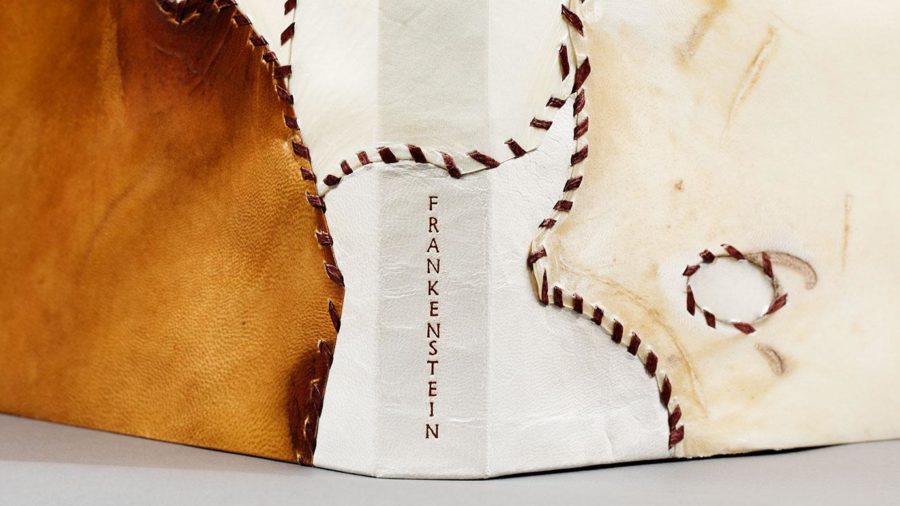“I judge a book by its cover;
I judge a book by its shape.”
– Alberto Manguel, A History of Reading
Oftentimes, we are preoccupied with the contents of a book rather than the book itself. The phrase, “Don’t judge a book by its cover” is preached as a metaphorical reminder not to be quick to judge someone by outward appearances alone. Most of us have placed an emphasis on getting to know someone beyond the superficial surface, and rightfully so.
However, the exhibition currently on display at the Regenstein Library (the Reg), A Book by Its Cover: Decorative Book Bindings from the Medieval Codex to Contemporary Artists’ Books, invites us to judge every book by its cover! By focusing on the intricately beautiful form of each book, the viewer starts to realize the depth of history that lies underneath each aesthetic choice. A book’s cover, spine, and even weight hold a story.
The exhibition opens with Claudia Cohen’s dos-à-dos Bookbinding Ephemera/paper, its accordion-like structure showcasing each page with different works of art. Every page retains its own color palette and texture. Depending on which angle you view the page, some patterns and papers morph into an optical illusion. The combination of all the vibrant colors illustrates how the aesthetic choice of paper changes our perception of each book. As spring dawns on us with flowers blooming and snow starting to melt, this Bookbinding Ephemera was paired beautifully with the warm weather on the last Monday of February.
After making my way past the medieval book bindings, I found myself by a large glass frame tucked alone in the far-right corner. In this secluded corner is Mary Wollstonecraft Shelley’s Frankenstein bound by the artist Karen Hanmer in 2018. Hanmer’s version emanates the very essence of Frankenstein. The stitching of contrasting dyed-calf vellum with visible vellum laces reflects Dr. Frankenstein’s process of forming one creature from different parts. The visibility of the stitching exposes the vulnerability that lies in imperfection. Shelley’s beautiful metaphor, “By slight ligaments are we bound to prosperity ruin,” encapsulates the art of bookbinding and restoration of text well. Each page is a ligament bound by string and leather to produce the object of knowledge, pleasure, distaste, war, and joy that is a book.
I was overjoyed to see the names of bookbinding artists to be largely female. After reading one of the exhibition texts, I then discovered that bookbinding is largely an anonymous art form, as it is the product of physical handiwork. As is true of printing and other art mediums, women have made lasting contributions, and beginning in the nineteenth century, they chose not to remain hidden in the margins. The Guild of Women’s binders was informed by the Arts and Crafts movement to revive the art and appreciation of handwork and individuality, particularly as a counterpoint to the uniformity of machine-made books and bindings. Focusing on the golden flower vines rimmed on the book cover of Lectures by William Morris, I was amazed by the level of detail and precision of each flower, leaf, and vine. To think that Paget made each detail herself by hand, is not only impressive, but magical. No machine can emulate the same sense of history. The binding of that book is part of a pivotal artistic movement. Unlike most exhibitions—although the change is happening (…slowly)—this exhibition gives voice to female bookbinders and artists that were not given the credit they deserved in their time.
If you are a Mansueto regular or find yourself in writer’s block for your final paper at the Reg, why not take a walk down to the Special Collections gallery space, on the way to Mansueto, and view the A Book by Its Cover exhibition. You might uncover great inspiration from the intricate bindings of books made in the 18th century or drift into the imaginative realm of the Arts and Crafts movement—each golden gilt symbolizing counterpoint to the uniformity of machine print press.
The exhibition is in The Hanna Holborn Gray Special Collections Research Center and will remain open until April 29, 2022.









